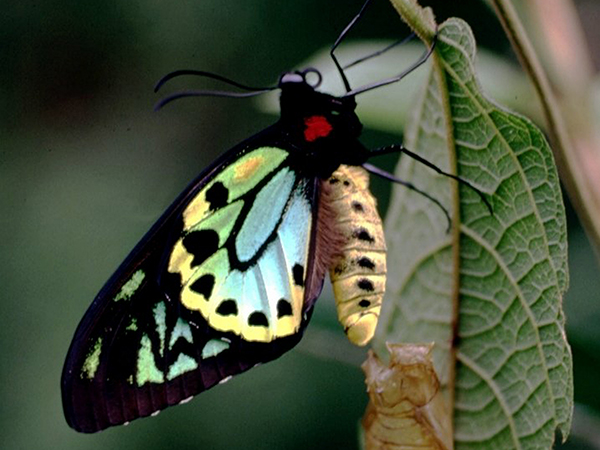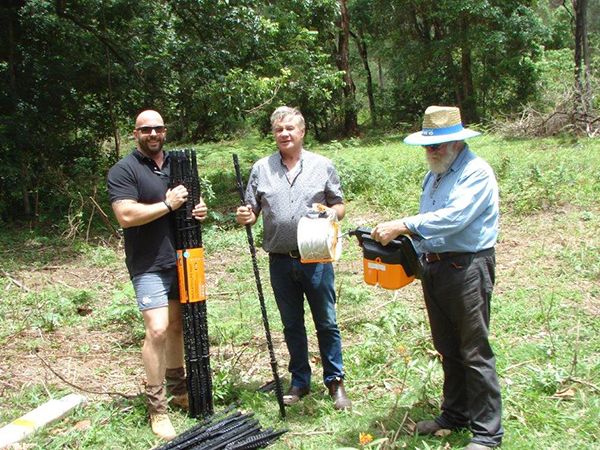Electric fencing helping vulnerable species to fly

The spectacular Richmond birdwing butterfly. Photo: Dr Don Sands, CSIRO.
It was once a common sight to walk down the streets of Brisbane and see thousands of Richmond birdwing butterflies dart across the sky. The subtropical rainforests in the area were the perfect breeding environment for their larvae, who fed on the lowland Richmond birdwing vine. In fact, the abundance and distribution of these pretty pollinators once extended throughout South East Queensland to Grafton in New South Wales.
Sadly, today it is a rare sight to see a Richmond birdwing butterfly in the wild. Urban development, land clearing for agricultural production and the introduction of the invasive South American dutchman’s pipe vine has destroyed the native butterfly’s habitat, rendering them a vulnerable species.
It’s a problem Brisbane Valley Kilcoy (BVK) Landcare Group are trying to rectify.
Recognising the importance of the Richmond birdwing vine in providing much-needed habitat for the Richmond birdwing butterfly, the group are planting vines throughout the Stanley River Catchment, with the assistance of a Landcare Australia Habitat Restoration Grant.
The Richmond birdwing vine is integral to the viability of the Richmond birdwing butterfly as they are the only food source for their larvae. The hope is that once established, the larvae will be able to feed off the vines, increasing its population and distribution across the area. The vines also establish wildlife corridors for other native animals, rehabilitating the local landscape.
More recently, the group has worked together with Landcare Australia sponsor Gallagher to install electric fencing on the property of group member Dave McCowan. Situated at Mount Kilcoy on the edge of the Conondale National Park, Dave’s farm ‘Yandilla’ is one of five locations where BVK have planted Richmond birdwing vines.
Browsing livestock, deers and wallabies on the property were posing a threat to the fledgling vines, who would trample or eat them. The electric fencing has provided protection for the vines, allowing them to grow without threat.

L to R: Gallagher territory manager Chris Richards with Reg Pease and Dave McCowan from Brisbane Valley Kilcare Landcare.
According to Dave, the fencing has been a great success. “There’s a lot of work required in setting up and establishing the vines,” he said. “You need to make sure the soil is right, there’s enough water and protection from strong winds, and the roots are kept cool. The last thing you want to happen after all this effort is for the plant to be destroyed by being eaten or trampled.”
Gallagher territory manager Chris Richards worked closely with BVK on the project, helping the group to select the most effective fencing solution whilst learning about the plight of the Richmond birdwing butterfly.
“The group helped me understand the importance of the birdwing vine and the issues around establishing and protecting it on Dave’s property,” Chris said. “We decided that for the location, and to protect against the threat from a range of animals, a portable solar energizer would be best used in conjunction with our simple to construct insulated line post fence.
“We went with a solar energizer because they’re powerful and reliable even in periods of low light and don’t require connection to mains power. Electric fencing will provide a peace of mind that the vines are safe from pressure from any animals that are about.”
Despite the initial investment of care that the vines require, once established they grow very well and will hopefully in years to come reintroduce the once-thriving Richmond birdwing butterfly to the area.



